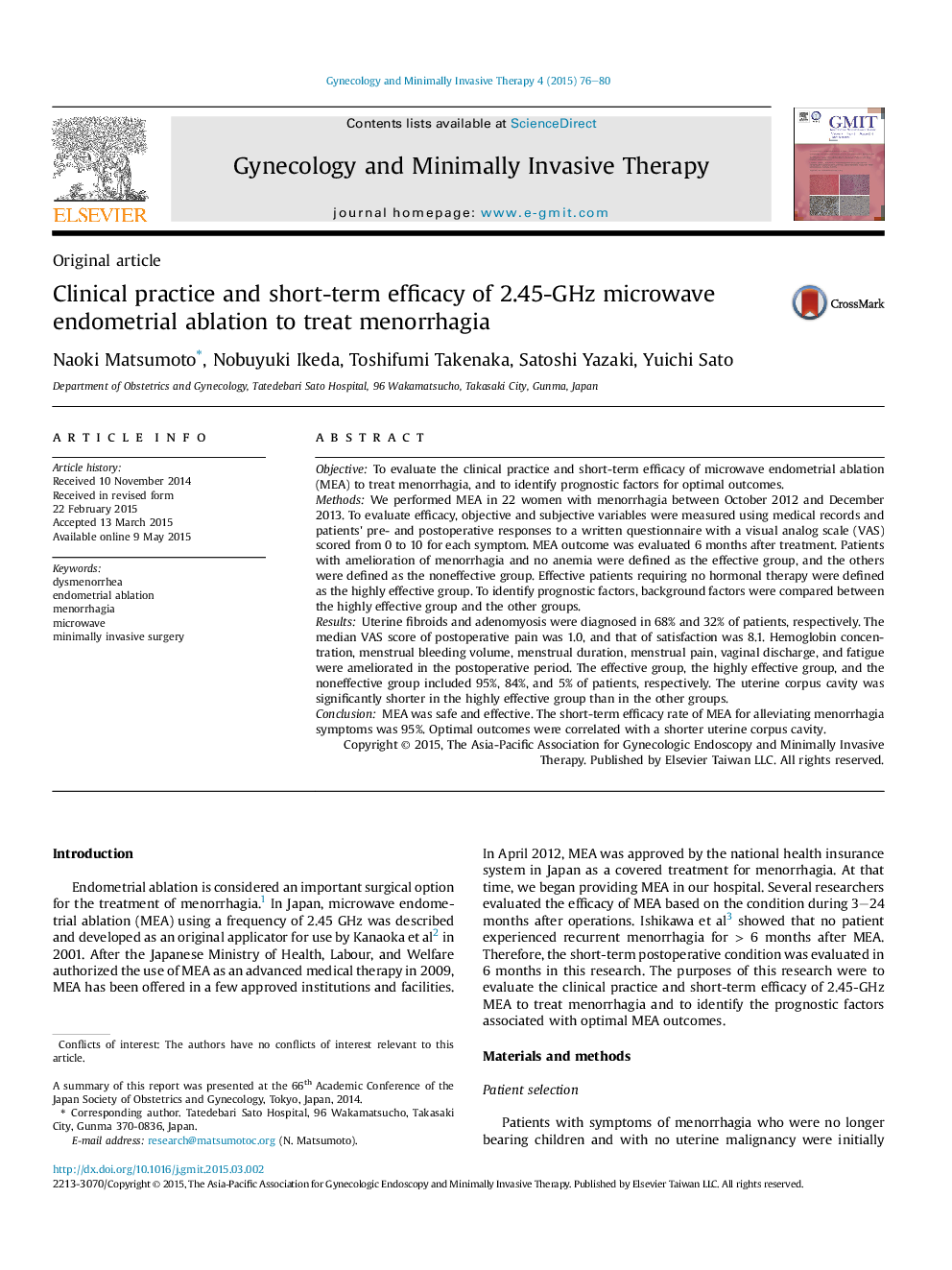| Article ID | Journal | Published Year | Pages | File Type |
|---|---|---|---|---|
| 3953677 | Gynecology and Minimally Invasive Therapy | 2015 | 5 Pages |
ObjectiveTo evaluate the clinical practice and short-term efficacy of microwave endometrial ablation (MEA) to treat menorrhagia, and to identify prognostic factors for optimal outcomes.MethodsWe performed MEA in 22 women with menorrhagia between October 2012 and December 2013. To evaluate efficacy, objective and subjective variables were measured using medical records and patients' pre- and postoperative responses to a written questionnaire with a visual analog scale (VAS) scored from 0 to 10 for each symptom. MEA outcome was evaluated 6 months after treatment. Patients with amelioration of menorrhagia and no anemia were defined as the effective group, and the others were defined as the noneffective group. Effective patients requiring no hormonal therapy were defined as the highly effective group. To identify prognostic factors, background factors were compared between the highly effective group and the other groups.ResultsUterine fibroids and adenomyosis were diagnosed in 68% and 32% of patients, respectively. The median VAS score of postoperative pain was 1.0, and that of satisfaction was 8.1. Hemoglobin concentration, menstrual bleeding volume, menstrual duration, menstrual pain, vaginal discharge, and fatigue were ameliorated in the postoperative period. The effective group, the highly effective group, and the noneffective group included 95%, 84%, and 5% of patients, respectively. The uterine corpus cavity was significantly shorter in the highly effective group than in the other groups.ConclusionMEA was safe and effective. The short-term efficacy rate of MEA for alleviating menorrhagia symptoms was 95%. Optimal outcomes were correlated with a shorter uterine corpus cavity.
